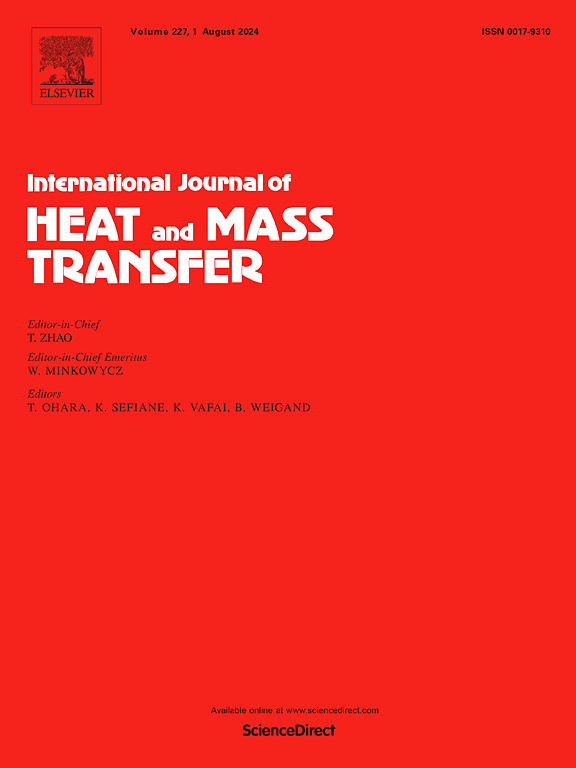Enhanced cooling performance of lithium polymer batteries using micro heat pipes integrated with carbon nanotubes coatings
IF 5.8
2区 工程技术
Q1 ENGINEERING, MECHANICAL
International Journal of Heat and Mass Transfer
Pub Date : 2025-05-06
DOI:10.1016/j.ijheatmasstransfer.2025.127164
引用次数: 0
Abstract
Effective thermal management is essential for optimizing the performance, lifespan, and safety of lithium polymer (LiPo) batteries, particularly under high discharge rates. This study experimentally investigates the thermal performance of water-charged carbon nanotube-coated micro heat pipes (CNT-MHP) as an advanced cooling solution. Comparative benchmarks include air forced convection (FC), uncharged micro heat pipes (U-MHP), and conventional water-charged uncoated micro heat pipes (C-MHP). The CNT-MHP utilizes highly efficient phase-change heat transfer, enabled by ultrafast water transport, which simultaneously enhances evaporation, condensation, and circulation processes in a heat pipe. The CNT-MHP significantly outperforms other methods, demonstrating up to a 71 % improvement in effective thermal conductivity and a 24 % higher heat transfer coefficient compared to the C-MHP. When applied to LiPo battery cooling, the CNT-MHP maintains a surface temperature of 31.7 °C, well below the 35 °C healthy threshold, even at a high discharge rate of 9 A. This marks a temperature reduction of over 7.3 °C compared to forced convection. Molecular dynamics simulations reveal the role of CNT nanostructures in enabling rapid water permeation and efficient heat transport. These results demonstrate the potential of CNT-MHP as a transformative cooling solution, ensuring safer and more reliable operation of energy storage systems under demanding conditions.
利用碳纳米管涂层集成微热管提高锂聚合物电池的冷却性能
有效的热管理对于优化锂聚合物(LiPo)电池的性能、寿命和安全性至关重要,特别是在高放电速率下。实验研究了水荷碳纳米管包覆微热管(CNT-MHP)作为一种先进的冷却方案的热性能。比较基准包括空气强制对流(FC),不带电微热管(U-MHP)和传统的水带电无涂层微热管(C-MHP)。CNT-MHP利用超高速水传输实现高效相变传热,同时增强热管中的蒸发、冷凝和循环过程。与C-MHP相比,cnts - mhp的有效导热系数提高了71%,传热系数提高了24%,显著优于其他方法。当应用于LiPo电池冷却时,即使在9 a的高放电速率下,cnts - mhp也能保持31.7°C的表面温度,远低于35°C的健康阈值。与强制对流相比,这标志着温度降低了7.3°C以上。分子动力学模拟揭示了碳纳米管纳米结构在实现快速水渗透和高效热传递中的作用。这些结果证明了CNT-MHP作为一种变革性冷却解决方案的潜力,确保在苛刻条件下更安全、更可靠地运行储能系统。
本文章由计算机程序翻译,如有差异,请以英文原文为准。
求助全文
约1分钟内获得全文
求助全文
来源期刊
CiteScore
10.30
自引率
13.50%
发文量
1319
审稿时长
41 days
期刊介绍:
International Journal of Heat and Mass Transfer is the vehicle for the exchange of basic ideas in heat and mass transfer between research workers and engineers throughout the world. It focuses on both analytical and experimental research, with an emphasis on contributions which increase the basic understanding of transfer processes and their application to engineering problems.
Topics include:
-New methods of measuring and/or correlating transport-property data
-Energy engineering
-Environmental applications of heat and/or mass transfer

 求助内容:
求助内容: 应助结果提醒方式:
应助结果提醒方式:


